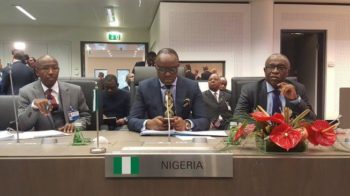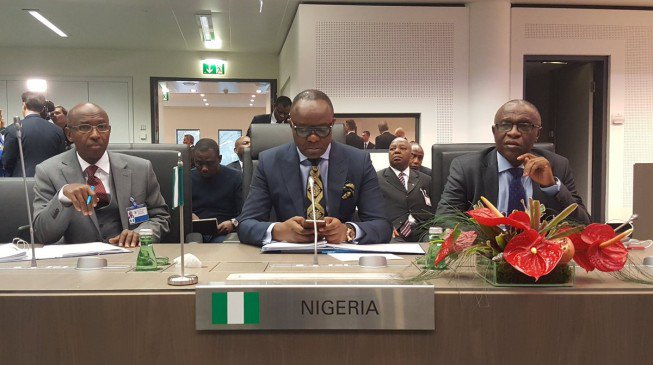
Minister of State for Petroleum Resources Emmanuel Kachikwu said on Thursday that conceptually Nigeria was not opposed to joining OPEC production caps but would have to wait and see if production came back to acceptable levels.
“We are targeting that by the end of the extension period (nine months) we are trying to prep and finalise repairs of our infrastructure and at that time we would be able to join,” he said.
“We have to wait and see that the militancy effects are out and the infrastructure is rebuilt and we’re back to production,” he said.
OPEC and non-OPEC oil producers are gearing up to extend output cuts on Thursday, possibly by as long as 12 months, to help clear a global inventory overhang and to support crude prices.
OPEC is discussing in Vienna whether to prolong an accord reached in December in which it and 11 non-members agreed to cut oil output by about 1.8 million barrels per day in the first half of 2017.
Most OPEC ministers, delegates and the market see a nine-month extension, instead of the initially suggested six months, as the base-case scenario but some countries including Russia have suggested an unusually long duration of 12 months.
“I think nine months is most likely,” one OPEC delegate said. Four other delegates agreed it was the most probable outcome.
OPEC’s de facto leader, Saudi Arabia, and top non-OPEC producer Russia have said cuts need to be extended to speed up market rebalancing and prevent oil prices from sliding back below $50 per barrel.
OPEC sources have said the Thursday meeting will highlight a need for long-term cooperation with non-OPEC producers.
The group could also send a message to the market that it will seek to curtail its oil exports, which have not declined as steeply as its production.
However, a decision on deeper output cuts is unlikely on Thursday, sources have said.
The OPEC meeting is expected to start after 0820 GMT, according to a preliminary schedule, followed by a joint gathering with non-OPEC after 1320 GMT.
By 0804 GMT, Brent crude was trading up almost 1 percent, near 54.50 dollars a barrel.
OPEC’s cuts have helped push oil back above $50 a barrel this year, giving a fiscal boost to producers, many of which rely heavily on energy revenues and have had to burn through foreign-currency reserves to plug holes in their budgets.
Oil’s earlier price decline, which started in 2014, forced Russia and Saudi Arabia to tighten their belts and led to unrest in some producing countries including Venezuela and Nigeria.

